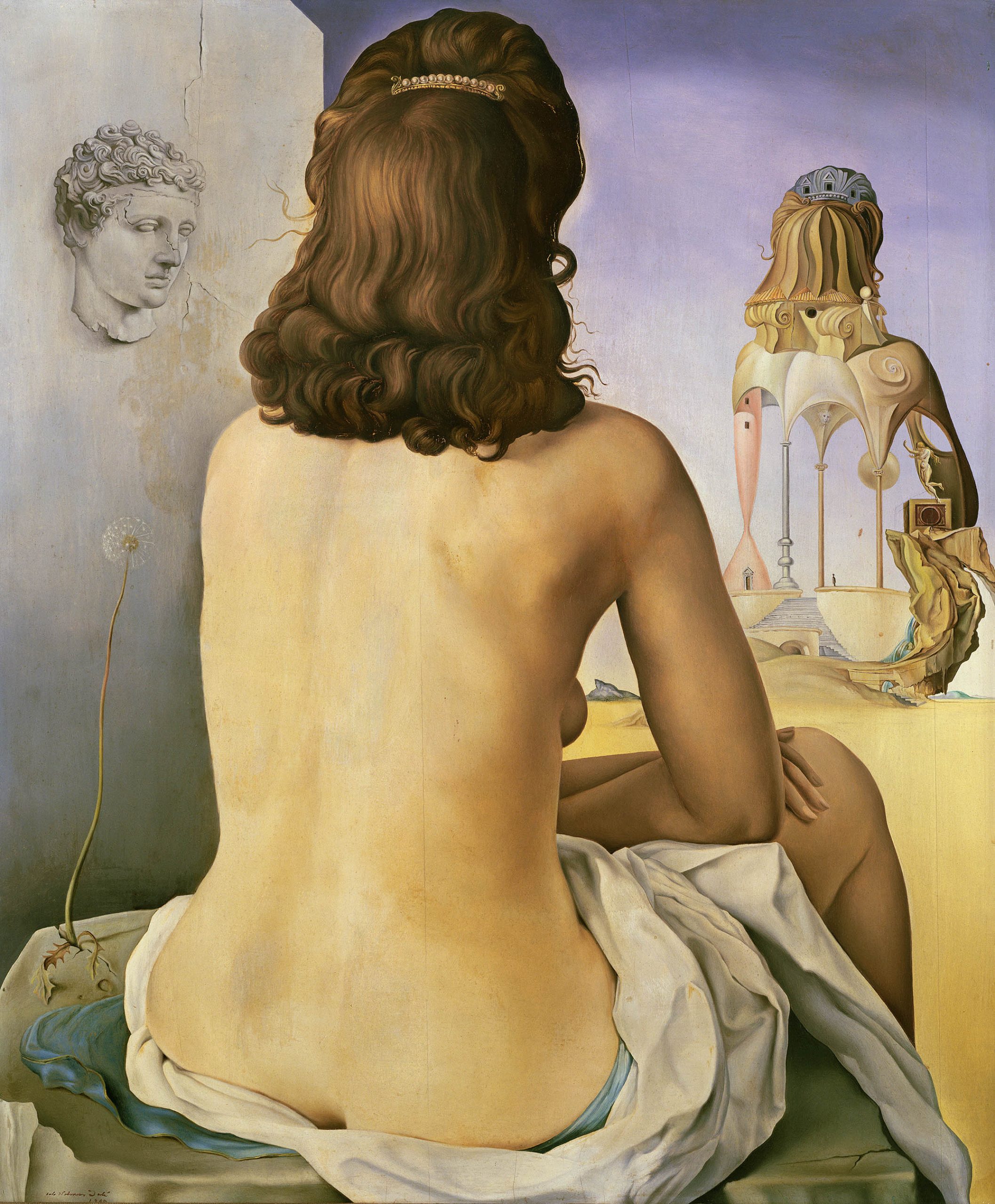
Jean-Louis Sebagh on My Wife, Nude, Contemplating her Own Flesh Becoming Stairs, Three Vertebrae of a Column, Sky and Architecture by Salvador Dalí
‘As a young medical doctor, training as an aesthetic surgeon in Paris, I first saw this painting at an exhibition celebrating the works of Salvador Dalí. I was immediately drawn to the contrast between the more classic, Renaissance style of the elegant woman and her deconstructed counterpart in the distance.
‘I love the beauty of the woman’s back; her elegant, naturally confident pose; and the fact that she is serenely contemplating herself. The surreal part of the painting is very interesting to me, from a surgeon’s perspective. Flesh covers up our architecture. The beauty in this wonderful painting is that we see and appreciate that they are always intertwined.’
Dr Jean-Louis Sebagh is a facial surgeon, cosmetic doctor and the founder and co-owner of the Dr Sebagh skin-care range.
Charlotte Mullins on My Wife by Salvador Dalí
The flamboyant showman Salvador Dalí is probably the world’s most famous Surrealist, despite only being associated with the movement in its later years and being expelled from the group by its founder André Breton in the late 1930s. With his twisty waxed moustache and narcissistic persona, Dalí burst onto the scene after being kicked out of art school in Madrid, Spain, and, by 1929, he was being heralded as a quintessential Surrealist. Breton wrote the exhibition catalogue for his solo show that year and said: ‘It is perhaps with Dalí that for the first time the windows of the mind are opened fully wide.’ The artist’s detailed and hallucinatory dreamscapes featured melting clocks, transmogrified bodies and fantastical landscapes. But, by 1940, he was living in America and moving away from Surrealism.
This painting dates from 1945, a time when Dalí’s interests in the dreamlike associations of Surrealism and his bespoke ‘paranoiac-critical method’ were giving way to a renewed interest in classicism and the Old Masters. It features his wife, Gala, seen from behind, her near-naked body realistically represented. In the distance, in a characteristic doubling, we see her form reimagined as a building, an array of fragmented scrolls and columns. A full dandelion clock sprouting next to her speaks of the passage of time. A blind classical relief sculpture could be a tousled stand-in for the artist’s own eroticism — only he can ‘see’ her naked front (but even then, the blank eyes suggest, he can only see her in his imagination or dreams).
Exquisite houses, the beauty of Nature, and how to get the most from your life, straight to your inbox.
Toby Keel is Country Life's Digital Director, and has been running the website and social media channels since 2016. A former sports journalist, he writes about property, cars, lifestyle, travel, nature.

